The advent of big data has brought about a transformation in analytical systems. There has been a significant increase in the type and volume of data, so businesses require a more meaningful analytics tool that will deliver invaluable insights. The choice of solutions might come down to Tableau vs Qlikview. Well, let’s see what sets these two apart.
Tableau vs Qlikview: The Comparison
When looking for data visualization tools, you might want to compare Qlik and Tableau.
Overview – Tableau Vs. Qlikview
A business discovery platform, QlikView helps users analyze the data to make actionable decisions. On the other hand, Tableau is more about data visualization, which easily connects with any data source and converts text-based data into interactive visualizations.
Users can create data analytics using data subsets and slice it as they want for the purpose of analysis with QlikView. The compressed data is automatically saved in its memory, where multiple users can access it.
While Qlikview focuses on big data, Tableau’s key focus is on the pictorial representation of data.
Features – Tableau Vs. Qlikview
QlikView prides itself on being one of the best business intelligence solutions available. It boasts an array of features, which make it an integrated business intelligence platform. Training manuals and tutorials make the tool easier to understand, deploy and configure. Report generation with Qlik is a breeze.
However, multiple features and tabs make Qlikview a somewhat complicated interface that lacks logical structure, especially when compared with Tableau, which boasts a neater interface and makes it a favorite with non-technical users and small businesses.
On the other hand, some of the fancy features of Qlikview, such as 3D charts, have no business value for most small and medium-sized businesses. Some users find it a lot time-consuming to format visual outputs. Contrarily, Tableau has an easy drag-and-drop menu, which is simple to use.
In fact, Tableau includes such features as world clouds, tree maps, and bubble maps to make the interface easier to understand. Users can effortlessly add content for graphics with treemaps. Even report sharing is a breeze with Tableau.
While Qlikview does not have mapping features, Tableau is brilliant at it. Its drill-down analysis and filters set it apart from Qlikview.
While Tableau fits small and medium businesses, Qlikview is better suited to big organizations that need an array of tools for multiple departments or those enterprises that need a powerful solution to manage humongous amounts of data.
Custom groups cannot be created with Tableau, so if your business needs this feature, you should be looking at other alternatives.
With regard to in-memory calculations, Tableau is slower than Qlikview.
Exporting data from your system in Tableau is a time-taking process when it comes to extracting, transforming, and loading data.
Price – Tableau Vs. Qlikview
Compared to Qlikview, Tableau is an expensive solution that requires a desktop license, besides a separate server, which might make it a costlier proposition for small businesses.
However, Tableau costs less upfront compared to QlikView. On top of it, implementation, maintenance, and use are easier with Tableau, making its total cost of ownership less compared to Qlikview.
If your idea of a BI is to build dashboards that reflect the same information all the time, you may want to choose Qlikview. However, Tableau is better suited to exploring what’s going on.
Product differentiators
While Qlikview has invested much in visualization functionality recently to come on par with Tableau, which has been a leader in visualizing data, the latter has gone a step further, introducing numerous enterprise-oriented technologies.
This is primarily done to make Tableau more scalable and IT-friendly to handle big data. However, Tableau continues to have better data visualization features.
Tableau is superior to what other BI vendors offer in terms of data visualization. It enables users to drill down and interact with data in a more efficient way than other BI apps.
Qlikview has an edge over Tableau in terms of enterprise functionality. It boasts strong capabilities to manage data access, generate repeatable reports, and scale up to manage huge workloads. As far as scalability is concerned, Qlikview has a clear edge. Thanks to its abundance of data connectors, Tableau makes it easier to connect in real-time to data sources.
Qlikview is a pioneer in prebuilt dashboard apps, search capabilities, and a robust associative dashboard that enables users to pull data in memory. A data warehouse is redundant as far as Qlikview is concerned.
Customer satisfaction
Tableau enjoys a positive record with customers, who have had positive experiences with the company. Qlikview is soon catching up. Users love Tableau for its ease of use even those without a technical background.
On the other hand, Qlikview users need IT or technical support to build dashboard apps and build database queries without the assistance of IT.
If you are still undecided on the best BI of the two, Tableau Vs. Qlikview, get in touch with ITQlick experts. We have decades of experience in the software niche and can guide you through the selection process. You can depend on our extensive database and knowledge to find the best BI tool for your business.
